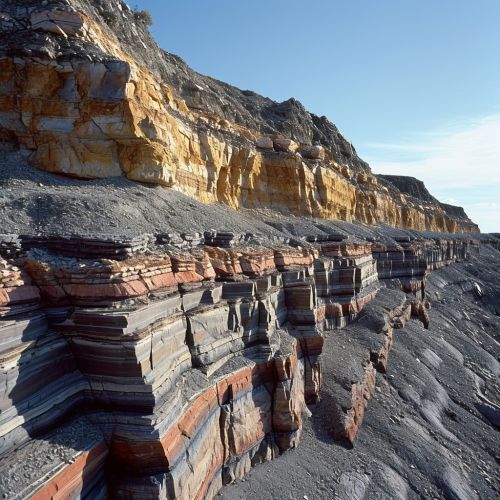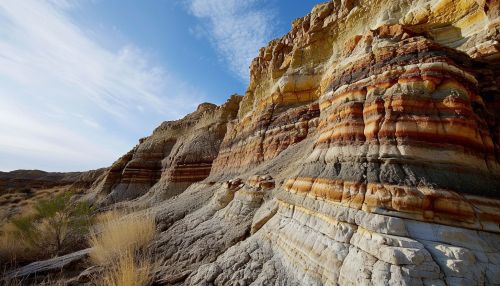Unconformity
Introduction
An unconformity is a contact between two rock units in which the upper unit is usually much younger than the lower unit. Unconformities are typically buried erosional surfaces that can represent a break in the geologic record of hundreds of millions of years. They are significant in the field of geology as they provide important information about the geological history of an area.


Types of Unconformities
There are three fundamental types of unconformities: disconformities, nonconformities, and angular unconformities.
Disconformity
A disconformity is an unconformity between parallel layers of sedimentary rocks which represents a period of erosion or non-deposition. Disconformities are recognized by correlating rock layers across the unconformity.
Nonconformity
A nonconformity exists when sedimentary rock is found on top of igneous or metamorphic rock. The sedimentary rock was deposited on the eroded surface of the igneous or metamorphic rock after an interval of weathering and erosion.
Angular Unconformity
An angular unconformity is an unconformity where horizontally parallel strata of sedimentary rock are deposited on tilted and eroded layers, producing an angular discordance with the overlying horizontal layers.
Formation of Unconformities
Unconformities are formed by erosion and/or non-deposition. The process of formation involves the erosion of an existing rock surface, followed by a pause in the deposition of sediment, and then the deposition of a new layer of sediment on top of the eroded surface. This process can take millions of years and often involves changes in environmental conditions.
Significance of Unconformities
Unconformities are significant in the field of geology for several reasons. They represent a break in the geologic record, providing evidence of periods of erosion or non-deposition. They also provide clues about the geological history of an area, including changes in environmental conditions and the movement of tectonic plates.
Identification of Unconformities
Unconformities can be identified in the field by looking for changes in the pattern, color, or type of rock layers. They can also be identified in drill cores or in seismic reflection profiles. The identification of unconformities can be challenging, especially in areas where the rock record is incomplete or poorly preserved.
Examples of Unconformities
There are many notable examples of unconformities around the world. One of the most famous is the Great Unconformity, which can be seen in the Grand Canyon in the United States. This unconformity represents a gap in the geologic record of nearly 1.2 billion years.
